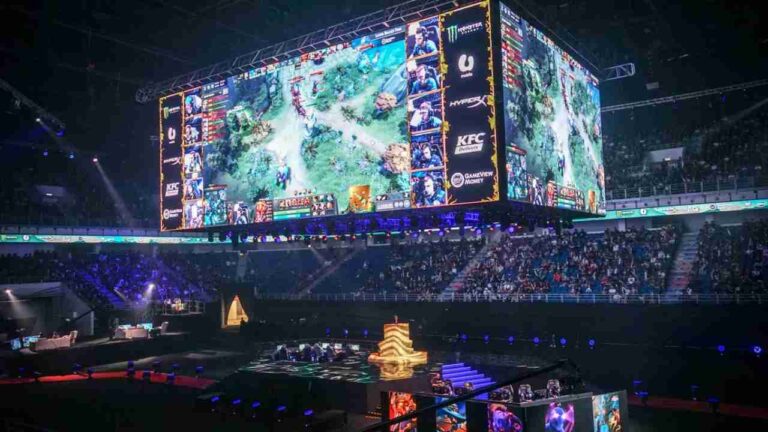The sport of competitive video gaming is already a global phenomenon. More commonly known as eSports, there are major tournaments in place with huge, six figure sums waiting for the winners.
eSports attracts the best players, and there are significant sponsors behind the big teams and competitions. Some may argue that it has peaked, but there seems to be plenty of room for growth across the next decade.
The Big Drivers
Those sponsors are a vital part of the current eSports landscape. Companies such as Intel, Red Bull and Nintendo have backed some major events in recent years. Sports betting companies have also been involved, and this is another area where competitive video gaming has benefited.
Many traditional bookmakers have embraced eSports and now include them as part of their platforms. As a result, it’s easy to find a wide range of betting odds from around the industry.
TV broadcasters have also got involved. eSports has its own dedicated channel where fans can tune in to follow their favourite teams and players. The landscape is already healthy so how can it improve?
Getting Into the Mainstream
While that eSports TV channel is in place, it would be helpful if more of the mainstream broadcasters were to cover major eSports events. Competitive video gaming has briefly been seen on Eurosport and others, but it’s largely been ignored by major companies such as Fox, Sky and TNT.
That could all change over the next ten years. The bigger TV companies are driven by revenue and once the popularity of an event grows, they will become interested. eSports already brings in serious investment and Fox and the rest will soon realise that there are financial benefits to be had.
We’ve seen parallels with Mixed Martial Arts; once a fringe sport, the biggest competitions are now shown exclusively on Pay Per View TV. It’s a path that eSports is ready to follow.
Keeping it Real
Technological advancements will always be at the heart of the video gaming industry. Whether it is to drive sales to recreational gamers, or to improve competitive eSports, the software developers will be working hard to improve the overall playing experience.
Realism has been key to the success of many games, particularly those that mirror traditional sports. The stunning sounds and graphics in the FIFA series are one example, and casual viewers may be forgiven for thinking that they are watching a real-life football match being played out.
So where does competitive video gaming go next when it comes to technology? The answer lies in a phenomenon that has already been around for decades.
A Virtual World
Virtual reality is set to transform many areas of digital life. The history of VR tells us that the technology progressed through the 20th century, but it’s yet to really make a mark on the wider general public.
Financial outlay and some large, cumbersome equipment that could quickly become outdated, may be behind the slow progression. Over the next decade, however, that should be set to change.
Even if the wider world doesn’t embrace the technology, it’s expected that virtual reality will develop in professional video gaming. In fact, we already have a VR league that is run by ESL Gaming.
VR brings games to life, and it takes the players right into the heart of the action. Those that strive for greater realism have a solution with this type of tech.
The challenge for eSports here would be to make VR tournaments entertaining to watch. It can be an odd experience to see players jumping around and carrying out actions without actually seeing what they are seeing. If the developers can convey this experience onto the screens at tournaments and on TV, this could take eSports into a whole new sphere.
Managing Expectations
Greater exposure and future advances in technology are key to the growth of eSports in the next ten years. Other plans are also in place, while there are additional areas that could be explored.
Competitive video gaming should be seen as inclusive, and that may not be the case right now. Those countries that are more digitally advanced have a tendency to produce the best athletes in this sphere, but that is an area for change.
In traditional sports, particularly football, the biggest emerging regions include Africa and Asia. While Asia has the technology and resources to produce top eSports competitors, that may not be the case in African countries.
Event organizers would be looking to find the best gaming talent from around the world, and that’s a target for the future.
In addition, it’s possible to expand the list of games covered by the pro gamers. Traditional titles such as DOTA 2, League of Legends and FIFA are likely to be joined by more options in the near future.
That future looks positive, but there are many areas in which eSports can advance over the next decade.


